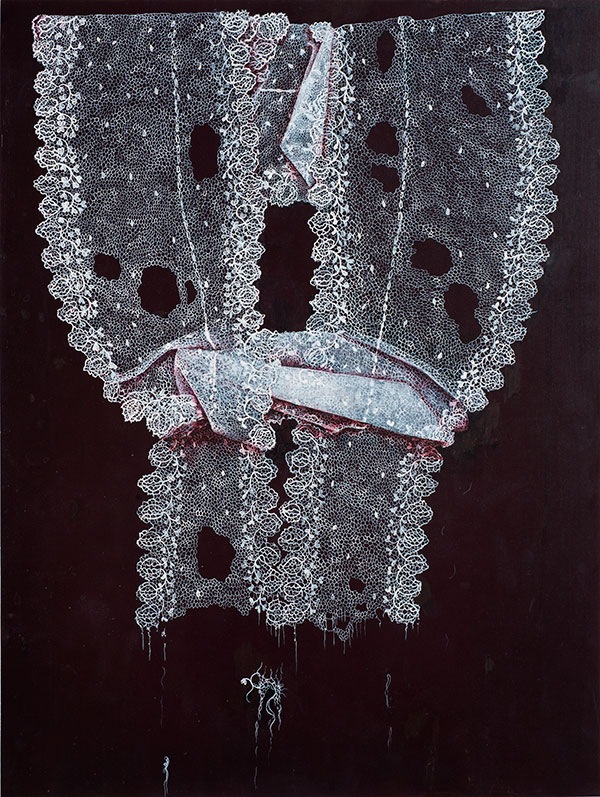By Marina Rybak

Cape of Needlepoint
I had a rare opportunity to visit the Antonio Ratti Textile Center at The Metropolitan Museum of Art and explore its renowned hand-made lace collection spanning the period of five centuries. The masterpieces of so called “lost art” are unmatched in beauty and their unique aesthetic is an integral element of the lingerie design narrative. Underscoring this connection, I became a supporter of the Center’s Lace Fund. Naturally, I was drawn to the artistic expression of Katherine Mangiardi, contemporary New York artist who is fascinated and is inspired by hand-made lace.
Web
According to Katherine’s “Artist Statement” she recreates “intimate portraits” of lace. Her enigmatic style expands from the realist to the ethereal. Her source of inspiration is both carefully studied and viscerally channeled. Graceful spirals, intricate scrolls and piercing curlicues are delicately rendered and boldly reconstructed on canvas. They are not mere visuals and mirror images of decorative patterns from the distant past.
For Helen
Her paintings invoke a mystical lacy labyrinth that casts a passage to the “invisible creators” and break the silence of “the forgotten women”, shrouded in the veil of anonymity. She taps into the reality, almost deleted from our collective memory. The lacemaker’s voice merges with Katherine’s, rescued by her from the withering fade-out of time.
KMM
I am reminded of the startling, vivid historic truth that up until the dawn of the 20th century women were mostly excluded from”The Pantheon of Fine Artists”, were forbidden to study art and primarily were identified with the textile arts and crafts.
I distill my emotional reaction and contemplate on the poignant, empowering message that Katherine Mangiardi’s art illuminates for me. After viewing her work I am left with a burning question: “Would our human experience be different and the present-day world be a different place if artistic expression was a free choice for all right from the beginning?”
For Irene
Katherine Was Here